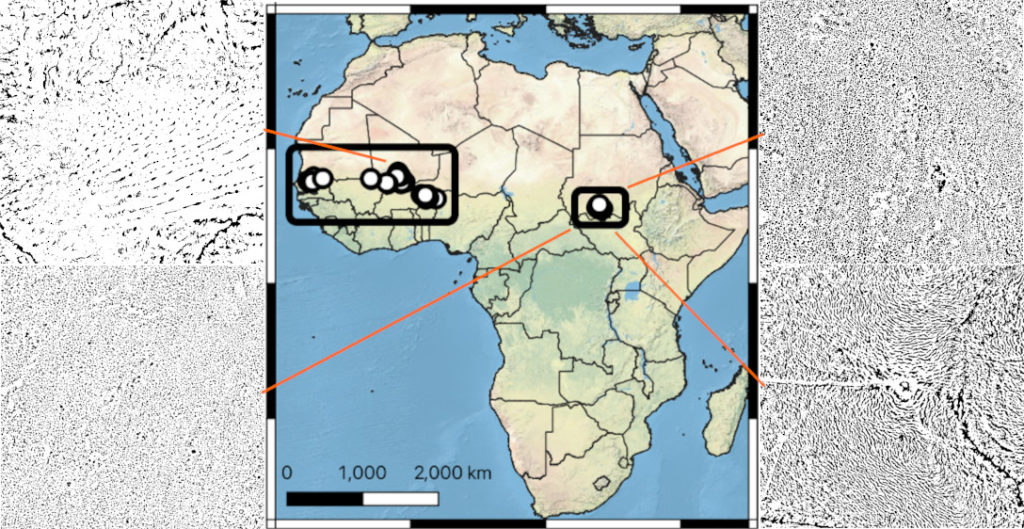Josh Buxton has recently published a paper which provides a method for quantifying the morphology of patterned vegetation and analyses the changing resilience of these sites over time using satellite data. You can find the work online.
Vegetation patterns form in dryland areas as a response to declining precipitation levels. They have also been hypothesised to be indicators of the resilience of the vegetation system. Previous studies have made this qualitative link and used models to quantitatively explore it, but few have quantitatively analysed available data to test the hypothesis. Here we provide methods for quantitatively monitoring the resilience of patterned vegetation, applied to 40 sites in the Sahel (a mix of previously identified and new ones).
We show that an existing quantification of vegetation patterns in terms of a feature vector metric can effectively distinguish gaps, labyrinths, spots, and a novel category of spot–labyrinths at their maximum extent, whereas NDVI does not. The feature vector pattern metric correlates with mean precipitation. We find that vegetation resilience is linked to precipitation, but we find no significant correlation between patter morphology and resilience.


